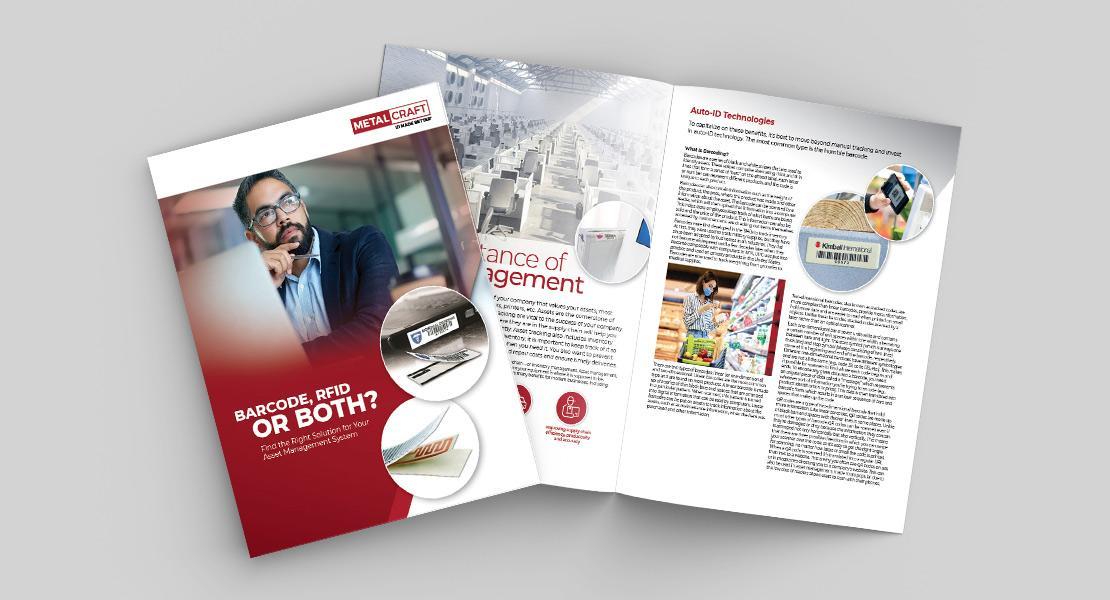RFID or Barcode? Barcode or RFID? We’ve heard this question ever since we started working with RFID back in the early 2000s and there isn’t just one simple answer. As an impartial provider offering both technologies, we can help customers determine which course to take in the Barcode vs RFID debate.
Barcode VS RFID - Consider your overall objective
When selecting a tracking technology there are a variety of factors to consider. We don’t like to think of it in terms of RFID versus barcode because they really are not competing technologies. However, there are different circumstances where one may fit the application better than the other and that is what this article is designed to help show. When working with a customer we like to first start by asking what their overall objective is because our objective shouldn’t be to just sell them a barcode label or an RFID tag, but to help them solve their identification problem. We want to help them uncover the best solution for collecting and managing their data.
First, let’s examine what we mean when we say we are tracking assets. An asset is anything that a company owns that has value and we further qualify the asset by defining it as either a fixed or mobile asset. A fixed asset, by definition, is anything that stays in one place like furniture or a piece of machinery. Whereas a mobile asset travels around either within the customer’s facility like laptops or to another destination and the auto identification technology helps track its return, i.e. containers, pallets or even vehicles. Most companies need to track both fixed and mobile assets.

Consider the surface
Next, what type of material is the barcode label or RFID tag going to be going on? The surface composition of an asset is not a factor for a barcode label because the label can be designed for radius or curved surfaces without negatively impacting the performance, whereas a radius or curved surface may impact the read range of an RFID tag. Likewise, metal surfaces or liquid-filled containers have no impact on the readability of a barcode label; however, metal surfaces present some challenges for RFID tags because the metal reflects the RF waves, detuning the antenna, which impacts the read range. Similarly, liquid-filled containers also can be problematic for RFID in that they absorb the RF waves, which detunes the antenna, impacting the read range.
Consider environmental factors
Once we’ve examined the surface composition of the asset, we need to look at other environmental factors the barcode label or RFID tag may be exposed to. Is it going to be outside or inside? Will it be exposed to chemicals? If so, what type and for how long? What type of temperature ranges will the label or tag be expected to survive?
Both RFID tags and barcode labels will work in various demanding environmental conditions; however, it is important to note that specialized tags for both barcode and RFID may be required in order to survive especially harsh environments and achieve the desired results. Specialty tags oftentimes come with a higher price tag and may not be economically feasible for some applications, which is why it is important to have your objective clearly identified complete with ROS targets at the beginning of this process.
What are the benefits of RFID, Barcode?
There are benefits to using either RFID or barcode that also should be taken into consideration when selecting a tracking technology.
Benefits of RFID include the ability to read multiple items in a short period of time, i.e. a case lot of containers, pallets, etc. This is highly beneficial for tracking mobile assets as it increases efficiency because of the amount of time saved, thereby increasing the return on investment (ROI). Unlike barcode labels, line of sight is not needed when reading an RFID tag, which is another benefit of the technology. RFID also allows for a longer read range in comparison to barcode labels. Exactly how long that read range depends on the type of RFID tag used. It can be near field using an NFC tag or just a few inches to an extended read range of 40 plus feet, depending on the tag, reader and the positioning of the reader. Again, this is all assuming we are using only passive RFID technology.
Benefits of using barcode include time to implement. Most often you can get a barcode installation up and running much faster than an RFID installation. This depends on the complexity of the installation, but from an RFID standpoint, you may have to consider potential RF interference and whether you need to complete a site survey.
Often, again depending on the complexity of the RFID installation, you may need to get an integrator involved, which will lengthen the overall process. The infrastructure for an RFID installation is typically going to be more expensive than a barcode-only installation. This is important to keep in mind as you are defining the objective of the project to make sure you can still achieve your ROS target.
Both technologies can work together
Personally, we really don’t think there should be an either-or question when it comes to barcode and RFID. There are a lot of benefits to using both barcode and RFID technologies in the same tag. First, there is a minimal additional investment to add the barcode to the RFID tag. Second, if you are tracking mobile assets that move between facilities, not all locations may be equipped to support an RFID infrastructure so having the barcode as a redundant technology allows the tag to be read in an open-source system. Lastly, having the barcode information programmed into the RFID chip provides reassurance and data redundancy.
Selecting a tracking technology for your application may seem daunting, but with the proper planning and execution, you will realize the power of your data and achieve your ultimate project objective.
For help choosing the best technology for your project, contact our ID specialists at [email protected] or 1-800-437-5283 or 641-423-9460.
 | About the Author: Marianne AlvaradoMarianne Alvarado is our Vice President of Sales. Alvarado joined Metalcraft in March of 2000 as a Territory Specialist, became Sales Manager in January 2022 and was named Vice President of Sales during August of 2023. She leads both the Outside and Inside Sales teams. Marianne lives in Davenport with her husband, Dave Beeman. Mobile Phone: 641-529-9492 Email: [email protected] Office: 3360 9th St. SW, Mason City, IA 50401 Office Phone: 641-423-9460 |




